Abstract
Necrobacillosis occurs in man and animals. The typical forms of the disease in animals are caused by Fusobacterium necrophorum biovar A; biovar B strains are much less pathogenic. In this study the pathogenicity for mice of eight human isolates of F. necrophorum was compared with that of animal biovar A and B strains. By subcutaneous inoculation seven of the human strains differed from biovar A but resembled biovar B in (1) producing, at the most, mild local lesions that rapidly healed, and (2) showing no enhancement of infectivity when suspended in sub-lethal doses of Staphylococcus aureus broth culture. The eighth human strain (A2433) resembled biovar A but differed from biovar B in (1) producing severe lesions, and (2) showing greatly enhanced infectivity in the presence of S. aureus. Nonetheless, strain A2433 differed from biovar A, both in the nature of the lesions produced and in its failure to cause severe general signs of illness and rapidly fatal infection. By intravenous inoculation one of two biovar B strains and all except one of the eight human strains produced purulent lesions, often severe, in the liver and elsewhere, but infection was not usually associated with general signs of illness. In contrast, intravenous injection of a biovar A strain gave rise to a rapidly fatal infection, with severe lesions in the liver or elsewhere. The results suggest that the term 'necrobacillosis' as used in human and veterinary medicine refers to diseases that differ in important respects.
Full text
PDF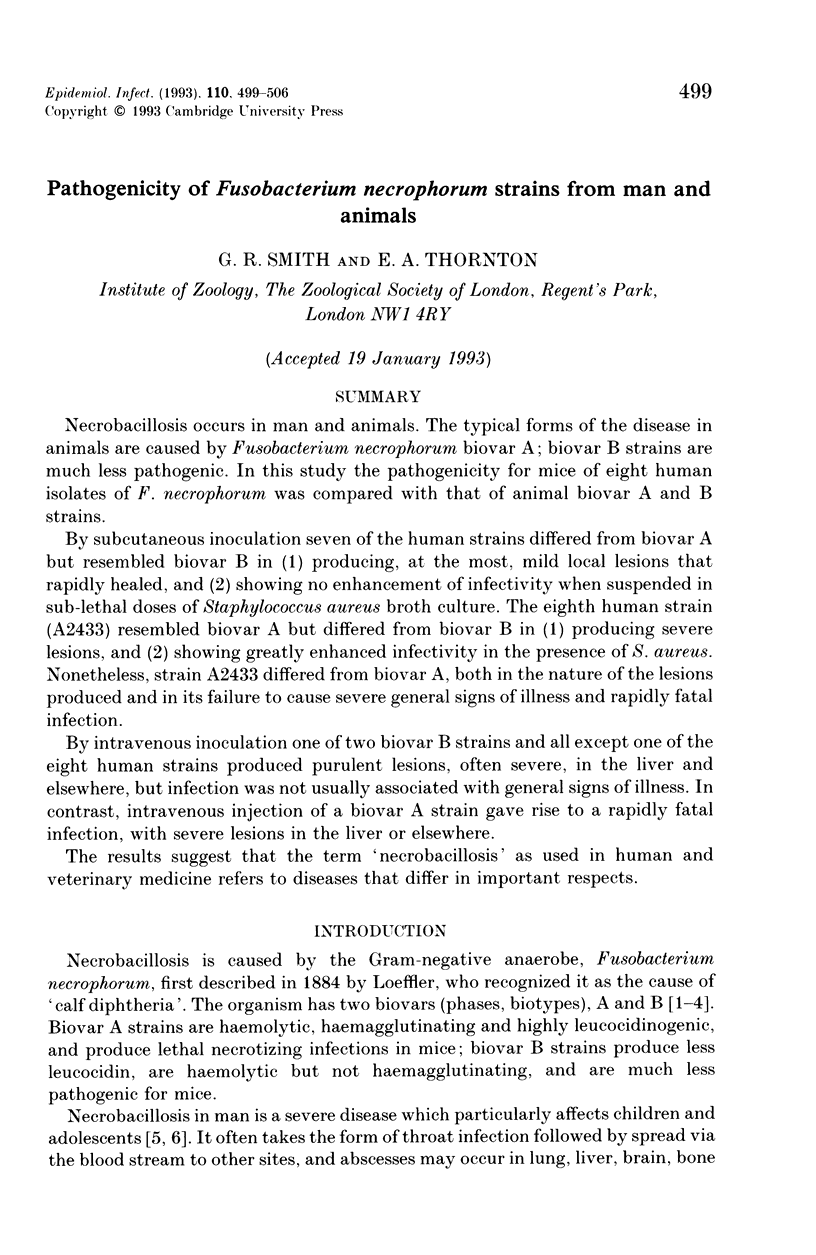
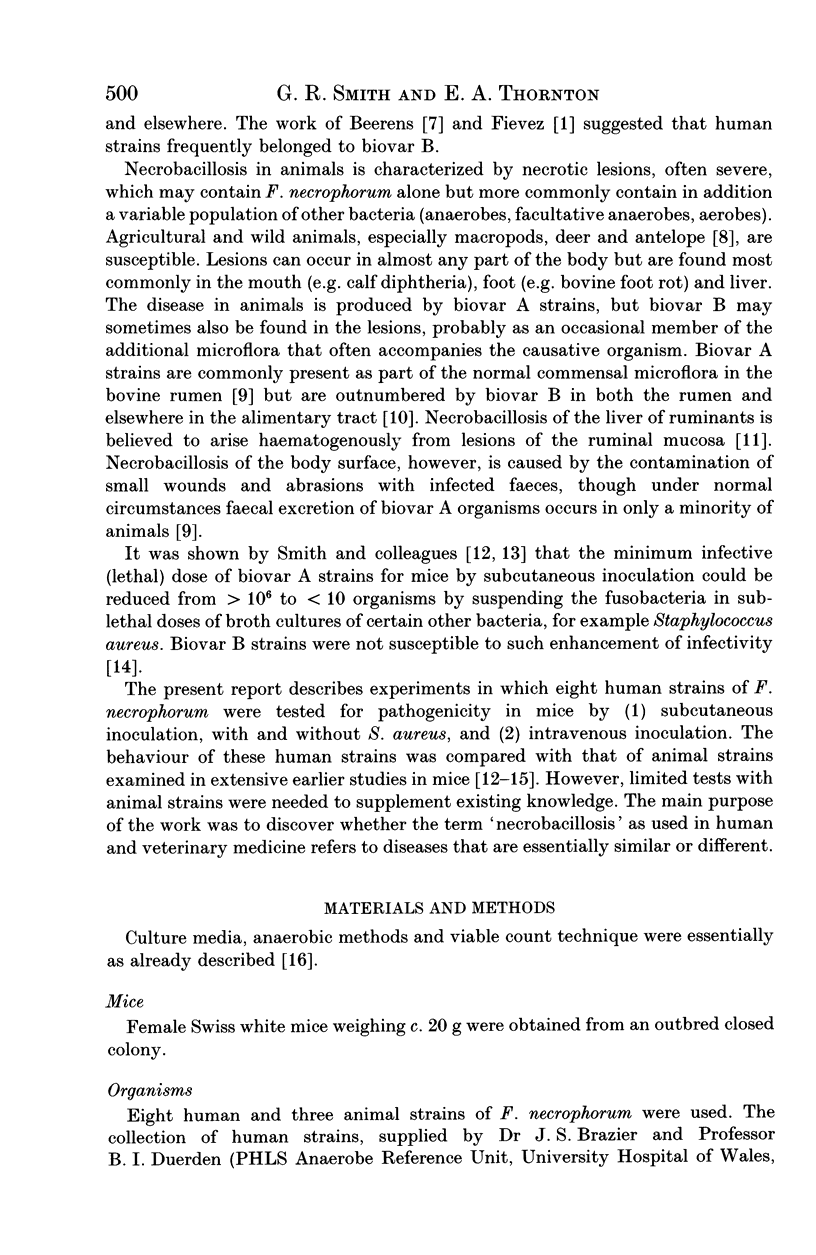
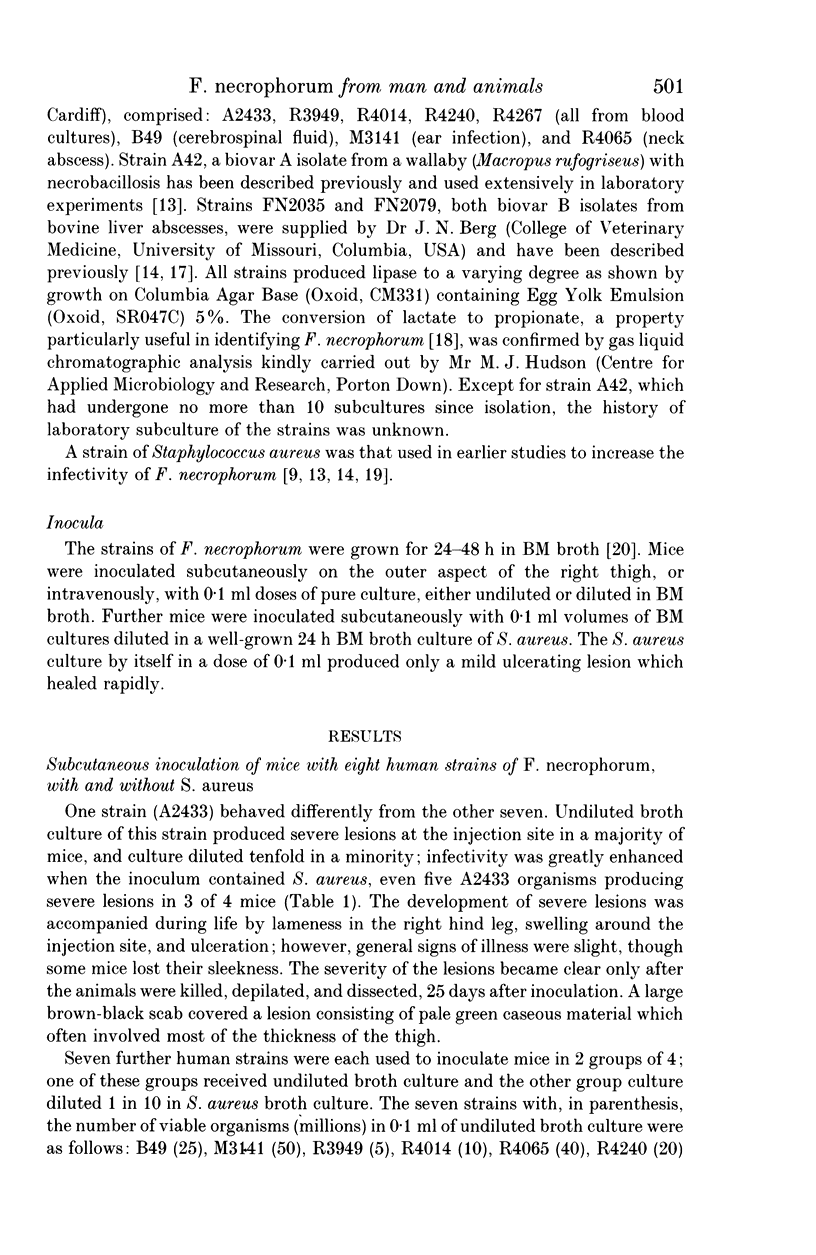
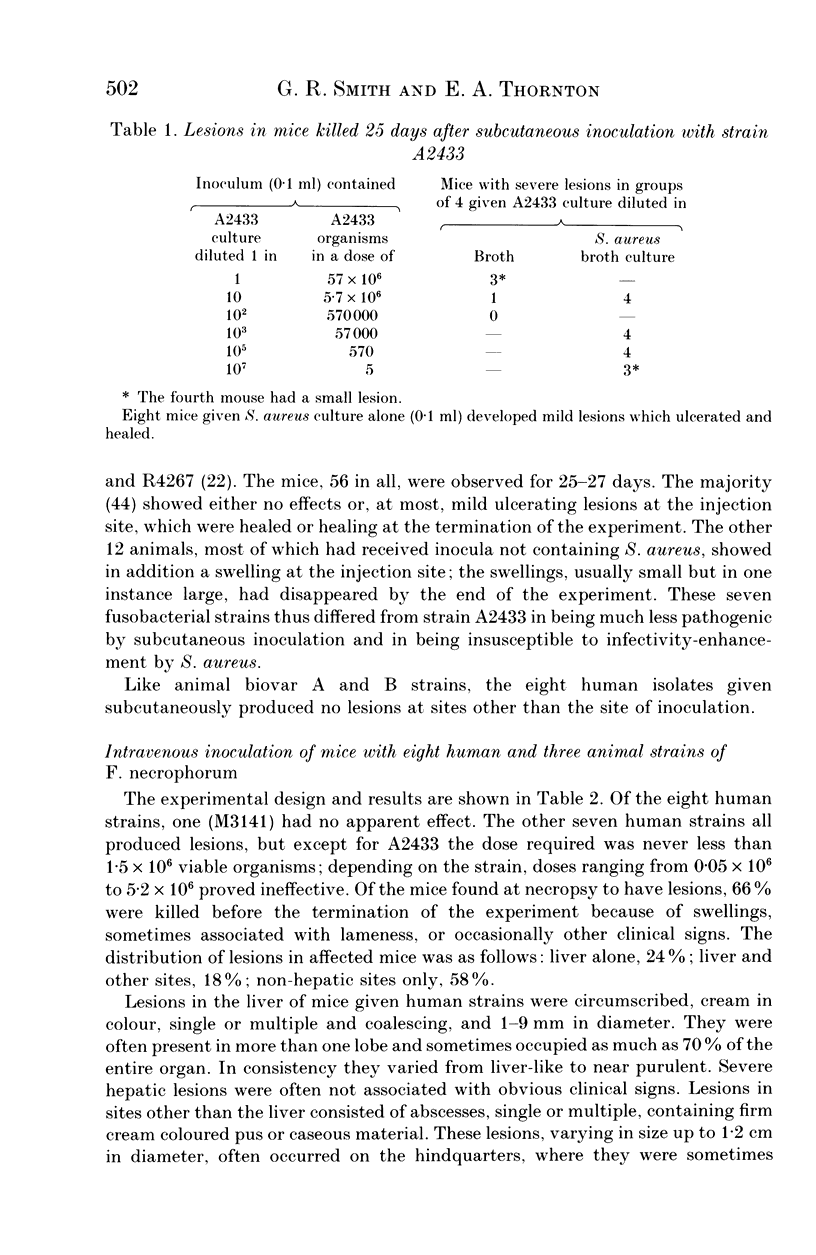
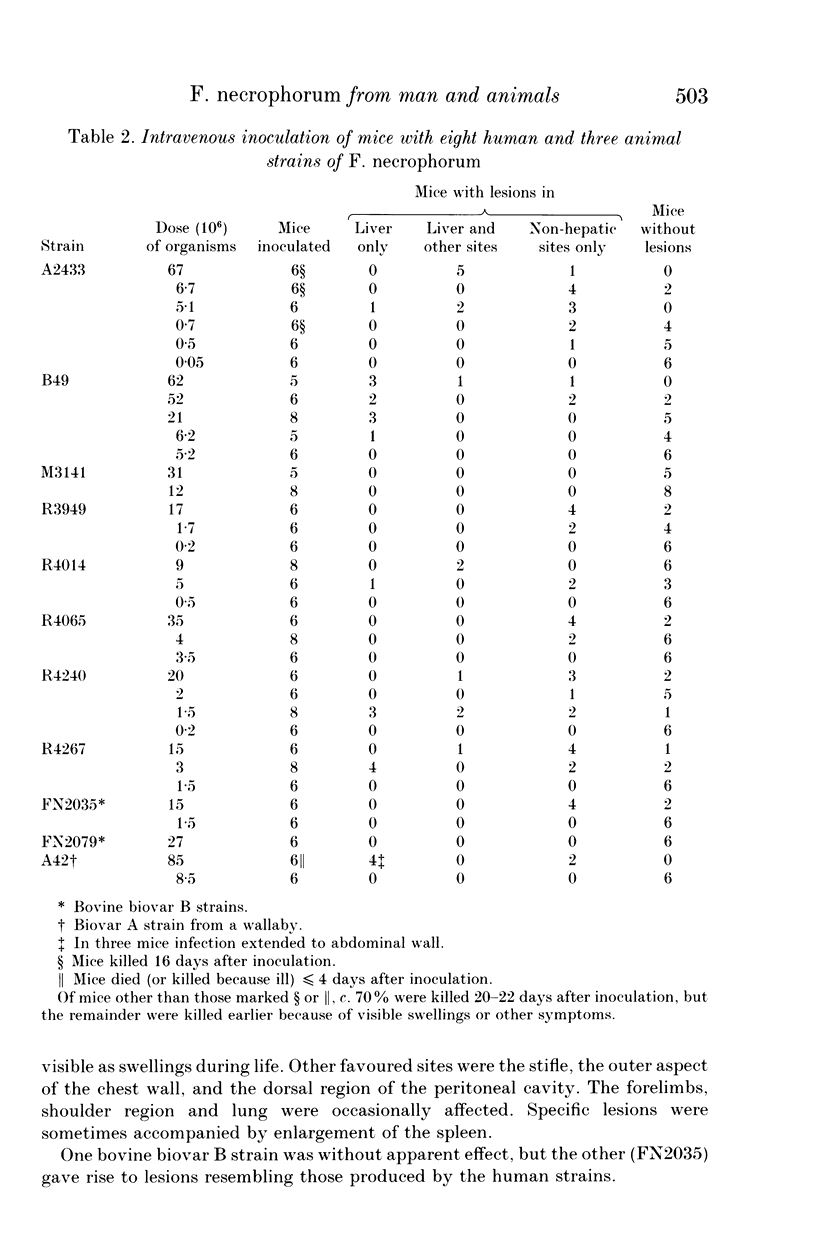
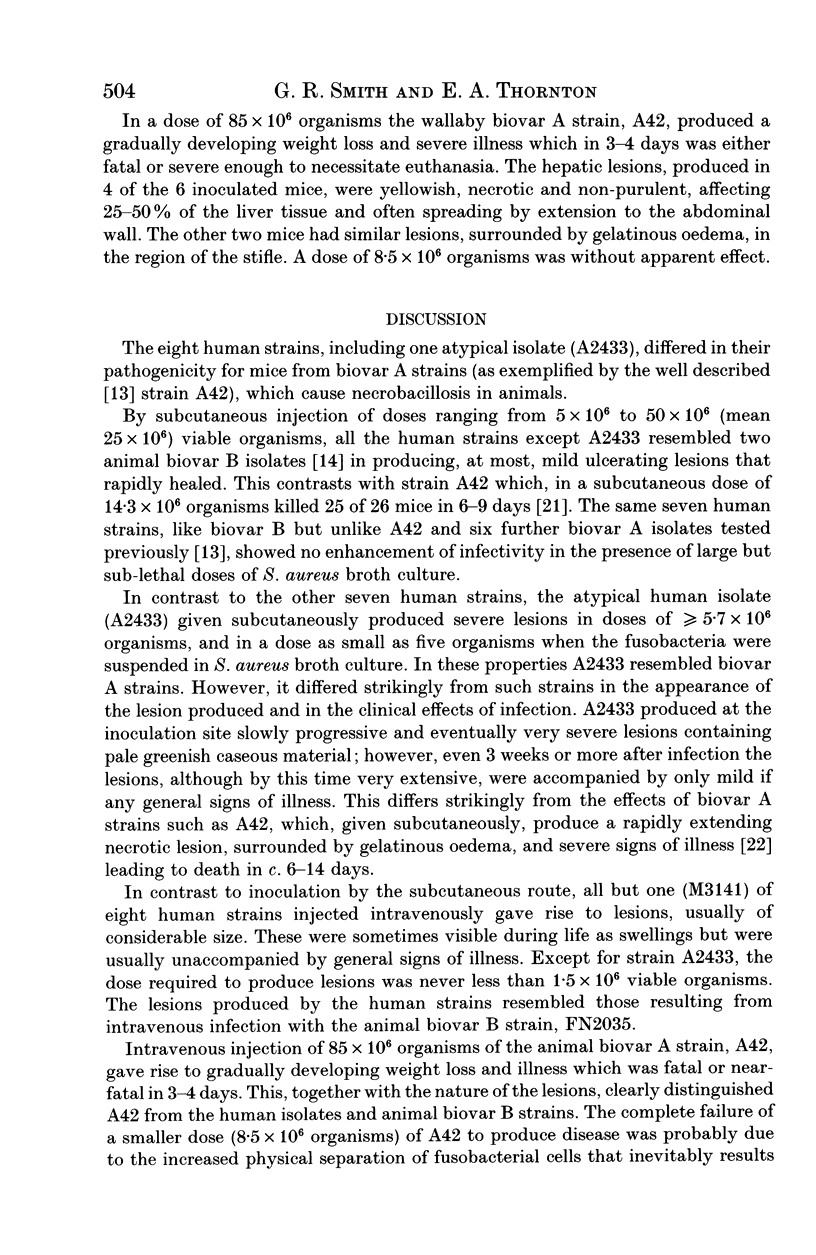
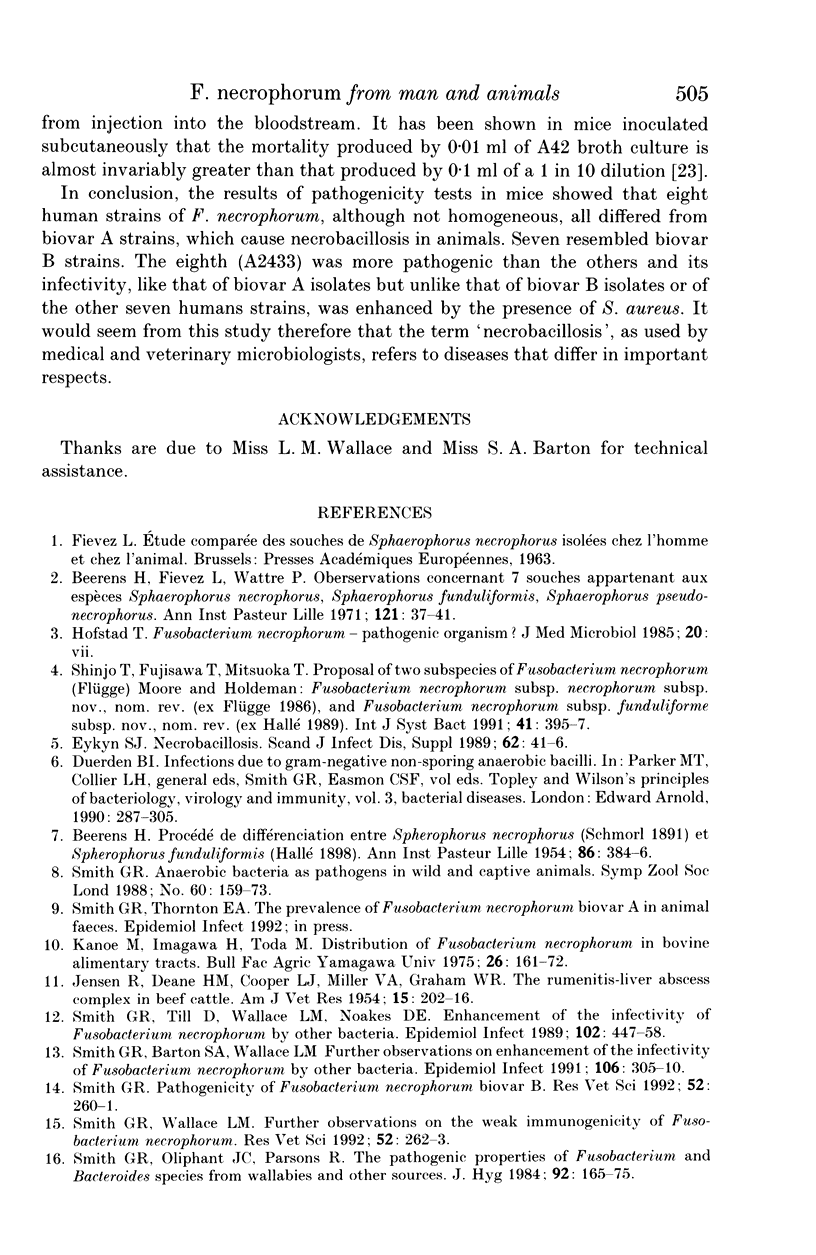
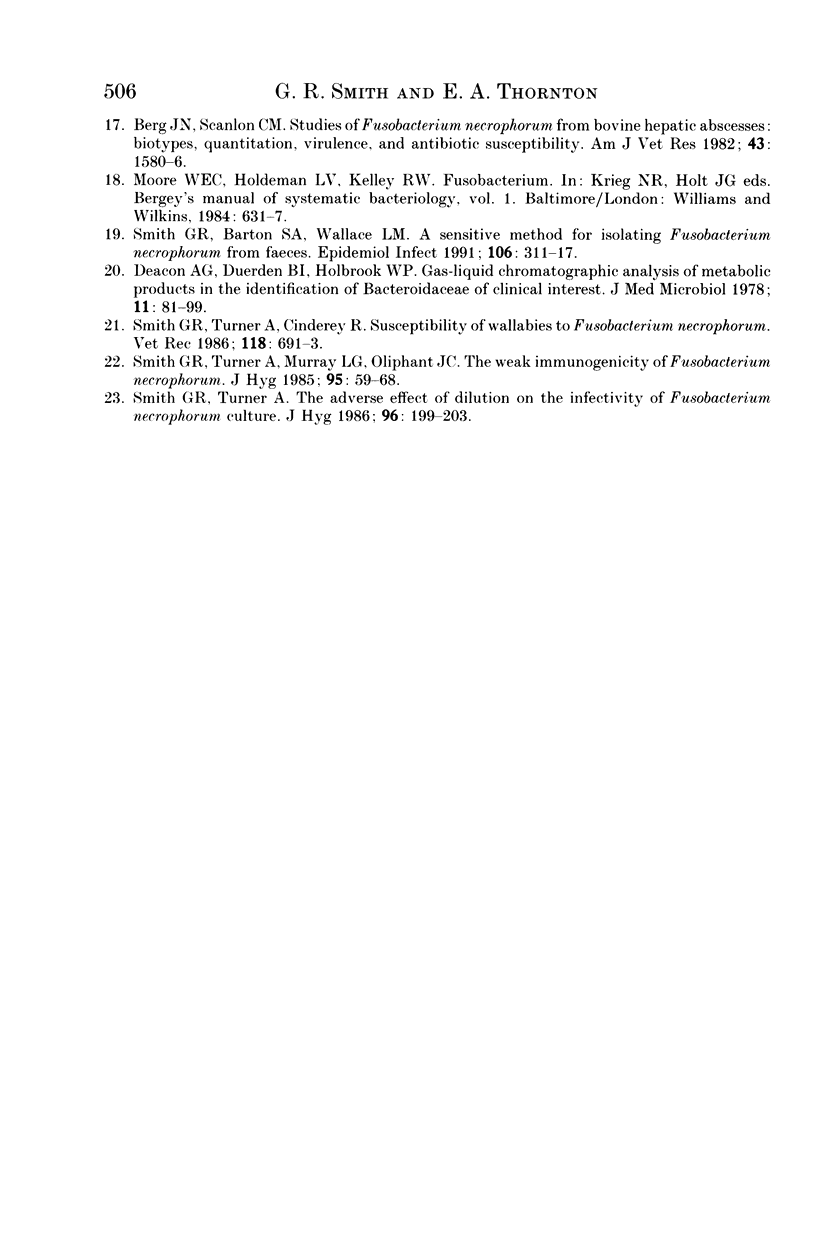
Selected References
These references are in PubMed. This may not be the complete list of references from this article.
- BEERENS H. Procédé de différenciation entre Spherophorus necrophorus (Schmorl 1891) et Spherophorus funduliformis (Halle 1898). Ann Inst Pasteur (Paris) 1954 Mar;86(3):384–386. [PubMed] [Google Scholar]
- Beerens H., Fievez L., Wattre P. Observations concernant 7 souches appartenant aux espèces Sphaerophorus necrophorus, Sphaerophorus funduliformis Sphaerophorus pseudonecrophorus. Ann Inst Pasteur (Paris) 1971 Jul;121(1):37–41. [PubMed] [Google Scholar]
- Berg J. N., Scanlan C. M. Studies of Fusobacterium necrophorum from bovine hepatic abscesses: biotypes, quantitation, virulence, and antibiotic susceptibility. Am J Vet Res. 1982 Sep;43(9):1580–1586. [PubMed] [Google Scholar]
- Deacon A. G., Duerden B. I., Holbrook W. P. Gas-lipuid chromatographic analysis of metabolic products in the identification of bacteroidaceae of clinical interest. J Med Microbiol. 1978 May;11(2):81–99. doi: 10.1099/00222615-11-2-81. [DOI] [PubMed] [Google Scholar]
- JENSEN R., DEANE H. M., COOPER L. J., MILLER V. A., GRAHAM W. R. The rumenitis-liver abscess complex in beef cattle. Am J Vet Res. 1954 Apr;15(55):202–216. [PubMed] [Google Scholar]
- Shinjo T., Fujisawa T., Mitsuoka T. Proposal of two subspecies of Fusobacterium necrophorum (Flügge) Moore and Holdeman: Fusobacterium necrophorum subsp. necrophorum subsp. nov., nom. rev. (ex Flügge 1886), and Fusobacterium necrophorum subsp. funduliforme subsp. nov., nom. rev. (ex Hallé 1898). Int J Syst Bacteriol. 1991 Jul;41(3):395–397. doi: 10.1099/00207713-41-3-395. [DOI] [PubMed] [Google Scholar]
- Smith G. R., Barton S. A., Wallace L. M. A sensitive method for isolating Fusobacterium necrophorum from faeces. Epidemiol Infect. 1991 Apr;106(2):311–317. doi: 10.1017/s0950268800048469. [DOI] [PMC free article] [PubMed] [Google Scholar]
- Smith G. R., Barton S. A., Wallace L. M. Further observations on enhancement of the infectivity of Fusobacterium necrophorum by other bacteria. Epidemiol Infect. 1991 Apr;106(2):305–310. doi: 10.1017/s0950268800048457. [DOI] [PMC free article] [PubMed] [Google Scholar]
- Smith G. R., Oliphant J. C., Parsons R. The pathogenic properties of Fusobacterium and Bacteroides species from wallabies and other sources. J Hyg (Lond) 1984 Apr;92(2):165–175. doi: 10.1017/s0022172400064184. [DOI] [PMC free article] [PubMed] [Google Scholar]
- Smith G. R. Pathogenicity of Fusobacterium necrophorum biovar B. Res Vet Sci. 1992 Mar;52(2):260–261. doi: 10.1016/0034-5288(92)90020-3. [DOI] [PubMed] [Google Scholar]
- Smith G. R., Till D., Wallace L. M., Noakes D. E. Enhancement of the infectivity of Fusobacterium necrophorum by other bacteria. Epidemiol Infect. 1989 Jun;102(3):447–458. doi: 10.1017/s0950268800030168. [DOI] [PMC free article] [PubMed] [Google Scholar]
- Smith G. R., Turner A., Cinderey R. Susceptibility of wallabies to Fusobacterium necrophorum. Vet Rec. 1986 Jun 21;118(25):691–693. doi: 10.1136/vr.118.25.691. [DOI] [PubMed] [Google Scholar]
- Smith G. R., Turner A., Murray L. G., Oliphant J. C. The weak immunogenicity of Fusobacterium necrophorum. J Hyg (Lond) 1985 Aug;95(1):59–68. doi: 10.1017/s0022172400062288. [DOI] [PMC free article] [PubMed] [Google Scholar]
- Smith G. R., Turner A. The adverse effect of dilution on the infectivity of Fusobacterium necrophorum culture. J Hyg (Lond) 1986 Apr;96(2):199–203. doi: 10.1017/s0022172400065967. [DOI] [PMC free article] [PubMed] [Google Scholar]
- Smith G. R., Wallace L. M. Further observations on the weak immunogenicity of Fusobacterium necrophorum. Res Vet Sci. 1992 Mar;52(2):262–263. doi: 10.1016/0034-5288(92)90021-s. [DOI] [PubMed] [Google Scholar]


